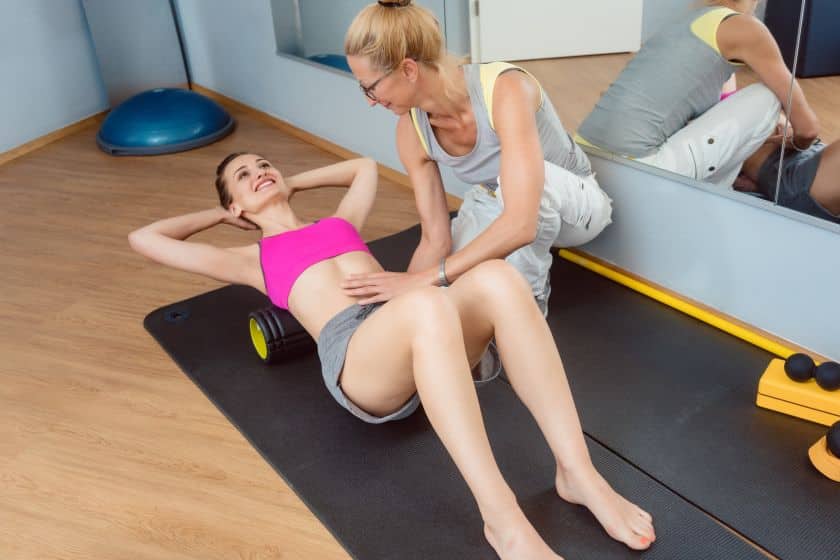Winter brings a beauty all its own—the sparkle of fresh snow, the quiet of crisp mornings, the rhythm of the season slowing down. But for many people, winter also brings something less welcome: icy sidewalks, wet floors, and hidden hazards that make walking more challenging than usual.
A simple trip or slip can lead to a serious setback—especially for older adults or anyone recovering from an injury. Each year, thousands of people experience falls during the winter months, leading to discomfort, reduced mobility, and loss of confidence.
The good news? Many of these falls can be prevented. With the right balance training, strength work, and mobility guidance from a licensed physical therapist, you can stay steady and secure no matter how cold or slippery it gets outside.
Why Trips and Falls Are More Common in Winter
As temperatures drop, the environment changes in ways that directly affect how we move. Icy patches, uneven snow, poor lighting, and bulky clothing all interfere with balance and coordination. Even something as simple as rushing to the car on a frosty morning can increase the risk of slipping.
Here are a few key reasons falls become more common this time of year:
- Slippery surfaces – Ice, snow, and wet entryways reduce traction, even for shoes with good grip.
- Decreased mobility – Cold weather can stiffen joints and muscles, making it harder to move freely or react quickly.
- Reduced visibility – Shorter days mean darker mornings and evenings, making it harder to see obstacles.
- Improper footwear – Smooth-soled shoes or boots without treads increase the likelihood of slipping.
- Carrying heavy items – Bags, shovels, or groceries can throw off your balance.
For older adults, reduced balance or strength makes these seasonal challenges even more dangerous. But with the right preparation, you can significantly lower your risk.
The Hidden Impact of a Fall
Even a “minor” fall can have lasting consequences. Beyond physical discomfort or bruising, a fall can trigger a deep fear of moving freely again. Many people become hesitant to walk outdoors, avoid exercise, or stay home more often—all of which can lead to a cycle of reduced strength, confidence, and independence.
This fear of falling can be just as limiting as the fall itself. But it doesn’t have to stay that way. Physical therapy offers a safe, effective, and personalized path toward rebuilding balance, mobility, and peace of mind.
How Physical Therapy Helps Prevent Trips and Falls
Physical therapy isn’t just for recovery after an injury—it’s one of the best proactive tools for staying strong, steady, and confident year-round. Here’s how a physiotherapist can help:
1. Comprehensive Balance Assessment
A physical therapist begins by evaluating how you move—your walking pattern (gait), posture, muscle strength, flexibility, and reflexes. This helps identify what’s contributing to instability or hesitation.
For example, a therapist might discover that weak hip muscles, tight ankles, or limited vision are playing a role in balance challenges. Once the cause is clear, a personalized plan is created to strengthen those areas and improve overall control.
2. Strengthening Key Muscles
Falls often happen because stabilizing muscles—especially in the hips, legs, and core—aren’t doing their job effectively. Physical therapy strengthens these areas with exercises tailored to your ability and goals.
This might include:
- Standing leg lifts for hip strength
- Step-up drills to improve control when climbing stairs
- Core exercises for better posture and coordination
- Resistance band routines to challenge balance safely
By training the muscles that support you, you improve your body’s ability to react quickly and stabilize when faced with uneven or slippery ground.
3. Balance and Coordination Training
Balance can be trained just like strength. Therapists use targeted exercises that help your brain and body communicate better, so you can maintain stability even when conditions change unexpectedly.
Balance training may involve:
- Standing on one leg or foam pads to simulate unstable surfaces
- Controlled weight shifting from side to side
- Step-over drills to improve reaction time
- Light agility work for coordination and foot placement
These activities teach your body how to adjust naturally—helping you stay upright when life throws you off balance.
4. Mobility and Flexibility Work
When joints or muscles become stiff in cold weather, balance suffers. Physical therapy restores flexibility through stretching and joint mobilization techniques, making movement easier and more efficient.
Simple mobility work, like improving ankle range or loosening tight hips, can make a big difference in stability. The more freely your body moves, the faster you can correct yourself when you slip or stumble.
5. Gait Training and Walking Practice
Your therapist may assess how you walk and suggest small adjustments to improve safety. For example, shorter steps, a slower pace, or better arm movement can increase stability.
In some cases, walking practice includes the use of assistive devices—like canes or walking poles—until your balance improves. You’ll learn how to use these tools properly and confidently, reducing the fear of falling.
6. Education and Prevention Strategies
A major part of fall prevention is awareness. Physical therapists teach practical ways to stay safe in winter, such as:
- Wearing shoes with non-slip soles
- Using handrails and proper lighting
- Keeping pathways clear of snow and clutter
- Warming up your muscles before heading outside
- Taking your time and avoiding rushing in icy conditions
You’ll leave each session not just stronger—but smarter about how to navigate winter safely.
The Role of Confidence in Fall Prevention
Falls can create a lingering fear that affects how you move. Some people begin walking stiffly or avoiding outdoor activities altogether, which can ironically increase the risk of falling again.
Physical therapy helps rebuild confidence through guided, supportive progress. Each exercise, movement, and balance drill helps you trust your body a little more. Over time, you’ll feel steadier and more self-assured—both physically and emotionally.
That confidence often becomes the biggest victory of all: walking into winter without hesitation or fear.
The Benefits You Can Expect
After completing a personalized fall-prevention program with a physical therapist, many people notice life-changing improvements:
- Better balance and coordination during daily activities
- Increased strength in the legs, hips, and core
- More energy and mobility for walking or exercise
- Reduced stiffness and joint discomfort
- Improved posture and body awareness
- Greater confidence and independence outdoors
The goal isn’t just to prevent falls—it’s to help you move through winter (and every season) with comfort, confidence, and ease.
For Older Adults: Regaining Independence Safely
For older adults, a fall can lead to fear of losing independence. That’s why prevention is essential. A physical therapist can create gentle yet effective routines that address age-related changes like reduced strength, slower reflexes, or balance challenges.
These programs are designed to meet you exactly where you are—whether you’re recovering from a recent fall or simply want to stay active and independent.
Through consistency and guidance, many older adults regain confidence in walking, standing, and moving safely on their own again.
When to See a Physical Therapist
If you’ve noticed any of these signs recently, it’s time to seek help before a fall occurs:
- Feeling unsteady or dizzy while walking
- Difficulty standing on one leg for more than a few seconds
- Relying on furniture or walls for balance
- Muscle weakness or joint stiffness
- Trouble seeing obstacles in dim light
- A recent trip, stumble, or close call
Even if you haven’t fallen yet, these are early signals that your balance or mobility could use attention. The sooner you start, the more effectively you can prevent future problems.
Staying Safe This Winter: Simple At-Home Tips
While physical therapy provides personalized guidance, you can also take small daily steps to support your balance and circulation:
- Stretch daily to keep joints flexible
- Wear proper footwear with good traction and support
- Keep your home clutter-free and well-lit
- Add handrails in areas like stairs or bathrooms
- Stay active indoors—movement keeps your muscles strong and responsive
- Warm up before heading outside—even a few minutes of marching in place helps
These habits work hand-in-hand with your therapy sessions to build lasting results.
The Bigger Picture: Prevention Through Movement
Trips and falls aren’t just about bad luck—they’re often the result of small, preventable issues that build up over time. Weak muscles, stiff joints, or reduced coordination can make everyday movement feel unstable.
Physical therapy addresses these challenges at their core, helping your body move the way it’s meant to: strong, stable, and responsive. By restoring balance and awareness, you create a foundation for lifelong confidence in every step you take.
Take the First Step Toward a Safer Winter
If you’ve experienced a fall—or worry that you might—don’t wait until it happens again. Physical therapy can help you regain strength, rebuild stability, and move safely no matter how icy the path ahead looks.
A licensed physical therapist will guide you through a tailored program to strengthen your body, retrain your balance, and restore the confidence that every step deserves.
Because winter should be a season of movement, not hesitation. With the right help, you can enjoy it fully—walking steady, strong, and sure.
Ready to move confidently this winter?
Contact your local physical therapy clinic today to schedule an assessment and discover how a personalized fall-prevention program can keep you active, safe, and strong through the cold months ahead.an find its way back to ease.
📍 Visit us at 1951 Bench Road Suite E, Pocatello, ID
📞 Call: (208) 237-2080
Your best years are still ahead—let’s make them active and strong.
More Free Resources:
Enjoy Gardening While Protecting Your Back – Highland Physical Therapy
Upper Back Pain Relief at Home: Simple Exercises for Quick Comfort – Highland Physical Therapy
Find Relief With Our Lower Back Pain Self Care Tips – Highland Physical Therapy


